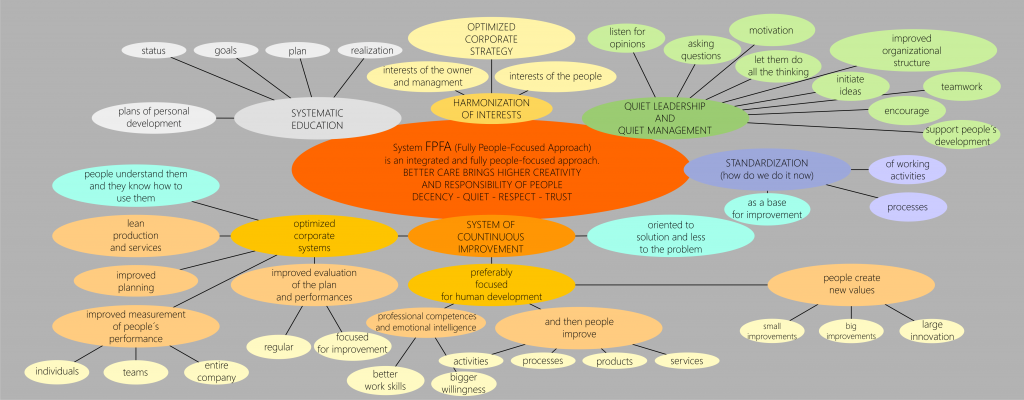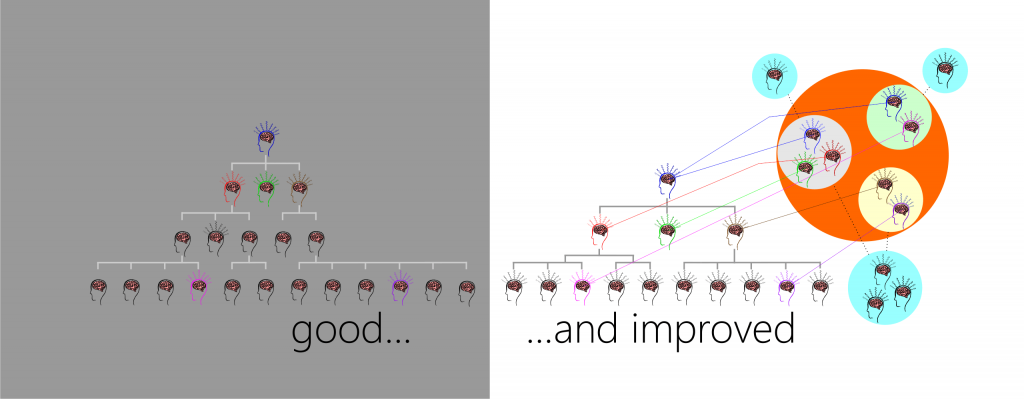We would like to cooperate with you by offering you a sequence of possible steps, resp. projects and you will choose.
For the implementation of major areas of improvement, we recommend working in the form of project management.
We will be happy to prepare the relevant documentation and implementation schedules for you.
We think that different types of projects can be successfully used to solve and implement improvements in the company. It may be appropriate to go about this through a large, complex project. But it can also be a sequence of small, individual projects, the implementation of which is arranged in a row. One ends and the other begins or multiple “side-by-side” solutions, with overlapping solution times. Every company is different and therefore each company can suit something different.
Tthe worst project is no project.
Therefore, we are of the opinion that it is essential to start now. And during the solution, also think about whether the current improvement project is good or it is better to adjust it.
To help, we provide a description of the individual components of the FPFA® system that may form the topics of future projects.
Systematic work on improvement will in any case lead to a holistic, integrated solution. The individual projects will increasingly fit together and form a unified system. Or at the beginning will be chosen a holistic approach to improvement and a large project with a gradual, balanced solution of its areas. Everyone according to his taste.
On one side, it is harmful to pay no attention to improving.
On the other side, wanting to do everything at any time, also can damage.
The individual areas of the FPFA system are organized in the following figure beginning “harmonization of interest” clockwise.


It is a difficult task – representing the interests of the owner. Even in small companies. HARMONIZATION OF THE INTERESTS of the owner, management of the company and people can be very beneficial for optimizing the company’s strategy.
This elaborated strategy will bring people around a long-term common goal and new relationships will support the way everyone drags for one speak. This can also be seen in the decline in conflicts at work and the increase in compliance and trust.
The benefits from the clarification of the owner´s interests and the interests of people who are integrated into an optimized corporate strategy should result in improving the creative atmosphere. This is a necessary condition for generating new ideas creating the basis of the continuous improvement process.

When a company has a good strategy, everyone knows about it and most agree with it, improvement can be primarily focused on LEADERSHIP AND MANAGEMENT either as a solution for the whole area or with a focus on the topic of motivation or teamwork. The use of interrogative sentences and praise for good work help a lot.
The benefits may show in a short time through increasing the number of improvement suggestions and new ideas.

ORGANIZATIONAL STRUCTURE (or after the old “spider”) can also be taken as a beneficial topic for improvement.
The original, classic structure, which serves well for the performance of daily tasks, can be supplemented, for example, by a new part of the network type. The new part of the organization is more suitable for organizing development tasks and improvements (orange color). They are still the same people, but systematically organized and motivated to solve projects with benefits in the future. These people, in a looser group, can then communicate directly with experts from other companies or institutions (turquoise color). This is important for greater flexibility and greater powers, but combined with greater responsibility for researchers. It is an organizational structure suitable for supporting new ideas and innovations.
The benefits of the new organizational structure are in the release of 1 – 2 levels of management and in the higher performance of the company with less people.

Perhaps the area of STANDARDIZATION is very important for your company at the moment. If standardization is also seen as a basis for improvement, it can also be an effective approach for the initial phase of the solution.
It is always necessary to compare new solutions with the given situation and before implementing new solutions, be sure that they are really improvements (what specifically and to what extent).
The benefit can be in unique documentation of critical corporate activities what has been done at a given time. Then it is easy to compare the new with the current and at the same time history is recorded for different types of evaluation and analysis.

If the company has a developed and implemented corporate strategy, well-represented interests of the owner, effective leadership and management (with functioning motivation, organizational structure and good teamwork), it is possible to progressively focus on the SYSTEM OF CONTINUOUS IMPROVEMENT (SCI).
Our experience shows that the right basis is the right planning, oriented to the real performance that a particular person can provide. In other words – planning is respecting the current performance of each person. Of course, this can cause difficulties (For example: in the line arrangement of the process), but otherwise it is very difficult to solve the effective measurement of performance and fulfillment of the individual’s plan. And all the more difficult is it then for the teams and the whole company.
The right setting of evaluation, with a built-in motivation system, is very beneficial for setting tasks in the next period, preferably in the form of an agreement. Thus, the measurement of outputs, the evaluation of the fulfillment of the plan and performances and the planning of the forthcoming period form a complete cycle of the planning system. The output of this planning cycle is also new suggestions for personal improvement, which can be used to update personal development plans
Of course, new ways need to be integrated into the company’s existing improvement system. And gradually, in an agreed manner and in the right sequence of steps, implement.
How current business processes run is crucial to making money today. And how efficiently the company is constantly improving is decisive for making money in the future and also for the effort and well-being.
The role of the continuous improvement system, which forms the core of the FPFA® system, is to give priority to improving people. And people with higher expertise and willingness then contribute to the improvement of everything that happens in the company. To improve activities, processes, products and services.
The company is only as good as good its people are.
The benefit of the system of continuous improvement is higher professionality and man´s willing work to work for the company, more new ideas and solutions, greater involvement in the identification and implementation of new things. And this is essential, because it is only interested in a new thing, it can only be sold.

SYSTEMATIC EDUCATION primarily asks the question: who should be educed in what and why?
It is good to think about the state of education in the company, what goals are reasonable to set and how to plan and implement it all. It can be a nice project.
Ideally, education is in line with the long-term goals formulated in the strategy or even better, when education is directly part of the strategy. Then it is guaranteed that people develop in the same direction as the company’s long-term goals are built.
Personal development plans have a special place in systematic education. Ideally, each person should have such a plan in writing and should function as a human-company agreement. About that: what we are about, what we are going for and what I will do to achieve it. And then you have a clearer idea of what to do in addition to your daily tasks (or even within them) and what you can gain in the future in position and money.
The benefits of systematic education, which is an integral part of the entire FPFA® system, are in achieving higher performance of people with less stress. This will directly improve the lower costs, higher profits and long-term prosperity of the company.
Every company is different, because every chooses its project for the development of continuous improvement.
In small companies, where everyone knows about everyone and everyone knows what´s about and what´s happening, it may be just to talk more.
Standards and at least the main principles of the system of continuous improvement could be written (to make it clear what I get from this when the benefits of the improvement are, for example, EUR 10,000 / year). And it is certainly beneficial for each person to have a written “Plan of personal development”. Everyone wants to know if they are counting on him for the future, and that includes making it clear what they have to do for it.
The PROJECTS section is divided into two parts – FOR GOOD TIMES and FOR BAD TIMES.
What has been said so far is more suitable for good times, because improvement is with future-oriented benefits. Therefore, in the section PROJECTS FOR GOOD TIMES, the content listed so far is not repeated. There are, for inspiration, other areas of improvement that can be the subject of projects.
In the PROJECTS FOR BAD TIMES section, the listed project topics are more suitable for periods of decline. Requiring small resources and providing fast effects.